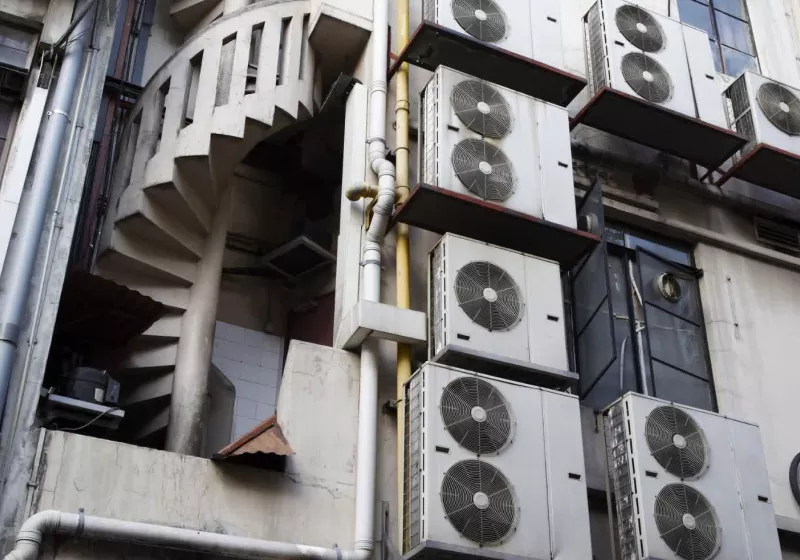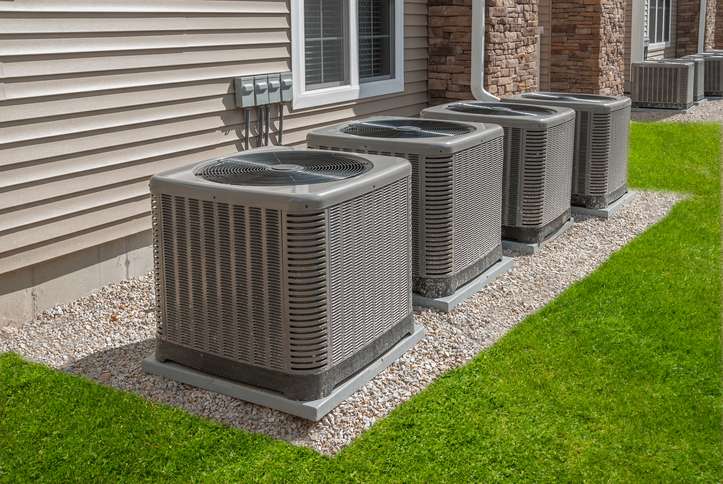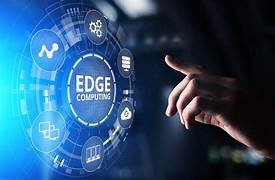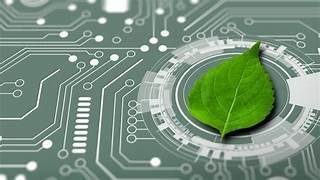In an increasingly digitized and climate-impacted world, the demand for effective and efficient cooling solutions has never been more critical. From the spiraling energy consumption of data centers to the urgent need for thermal comfort in rapidly warming urban environments, traditional cooling methods are proving insufficient, both in terms of performance and environmental sustainability. The conventional air conditioning unit, for instance, a staple in homes and businesses for decades, relies on energy-intensive vapor compression cycles and often uses refrigerants with high global warming potential.
As global temperatures rise and technological advancements demand cooler, more stable operating conditions, the imperative to innovate in cooling technology becomes undeniable. This is where “Next-Gen Cooling Solutions” enter the forefront – a diverse and rapidly evolving field dedicated to developing groundbreaking approaches that are not only more powerful but also significantly more energy-efficient, environmentally friendly, and adaptable. This article will delve into the profound need for these advancements, explore the cutting-edge technologies driving this revolution, discuss their transformative applications across various sectors, examine the inherent challenges in their widespread adoption, and project the profound impact they will have on our sustainable future.
The Urgent Need for Cooling Innovation
The urgency for next-generation cooling solutions stems from several interconnected global challenges.
- Climate Change and Rising Global Temperatures:
- Increased Heatwaves: More frequent and intense heatwaves necessitate greater cooling capacity for human comfort and safety.
- Urban Heat Island Effect: Cities, with their dense buildings and concrete surfaces, trap heat, exacerbating the need for cooling.
- Feedback Loop: Traditional cooling consumes significant energy, often generated by fossil fuels, contributing to greenhouse gas emissions and further accelerating climate change.
- Explosion of Data Centers and Digital Infrastructure:
- Thermal Management is Critical: Electronic components generate immense heat; efficient cooling is vital for performance, reliability, and longevity of servers, CPUs, and GPUs.
- Energy Consumption: Cooling can account for 30-50% of a data center’s total energy use, presenting a massive energy efficiency challenge.
- Higher Density Computing: Newer processors pack more power into smaller spaces, intensifying heat dissipation requirements.
- Industrial Processes and Manufacturing:
- Process Cooling: Many industrial processes (e.g., chemical, pharmaceutical, metals) require precise temperature control for optimal reactions and product quality.
- Equipment Lifespan: High temperatures can degrade machinery, leading to downtime and increased maintenance costs.
- Food and Cold Chain Preservation:
- Food Security: Efficient refrigeration is crucial for preserving perishable goods, reducing food waste, and ensuring food security globally.
- Vaccine and Medicine Storage: Many pharmaceuticals require strict cold chain management to maintain efficacy.
- Limited Resources and Environmental Regulations:
- Water Scarcity: Traditional cooling towers can be water-intensive, posing challenges in water-stressed regions.
- Harmful Refrigerants: Phasing out refrigerants with high Ozone Depletion Potential (ODP) and Global Warming Potential (GWP) is a key environmental imperative.
Diverse Approaches to Next-Gen Cooling

The innovation in cooling solutions spans a wide spectrum of scientific and engineering disciplines, moving beyond conventional vapor compression.
- Advanced Refrigeration Cycles & Refrigerants:
- Magnetic Refrigeration (Magnetocaloric Effect): Uses magnetic fields to heat and cool materials, offering a potentially highly efficient, refrigerant-free alternative.
- Thermoelectric Cooling (Peltier Effect): Uses electrical current to create a temperature difference across a junction of two dissimilar materials. Scalable for small devices, but research continues for larger applications.
- Adsorption/Absorption Chillers: Utilize heat (often waste heat) and adsorbent/absorbent materials (like silica gel or lithium bromide) to create a cooling effect, instead of electricity.
- Low GWP Refrigerants: Development of new synthetic refrigerants (e.g., hydrofluoroolefins – HFOs) with significantly lower global warming potential than traditional HFCs.
- Natural Refrigerants: Increased adoption of ammonia, CO2, and hydrocarbons, which have very low GWP but require specialized handling.
- Passive Cooling Strategies: Leveraging natural phenomena to dissipate heat, minimizing active energy input.
- Radiative Cooling Materials: Engineered surfaces that reflect sunlight and simultaneously emit heat in the infrared spectrum, sending it directly into cold outer space, even under direct sunlight.
- Evaporative Cooling: Utilizing the principle of water evaporation to lower air temperature (e.g., desert coolers), effective in dry climates.
- Phase Change Materials (PCMs): Materials that absorb and release large amounts of latent heat as they change phase (solid to liquid and vice versa), providing thermal energy storage and passive cooling.
- Advanced Building Design: Incorporating natural ventilation, shading, high-performance insulation, and reflective roofs to reduce heat gain.
- Liquid Cooling Technologies (Especially for Data Centers): Directly cooling components with high thermal conductivity liquids.
- Immersion Cooling: Submerging IT hardware directly into a dielectric, non-conductive liquid. This offers extremely efficient heat transfer and can reduce data center energy consumption significantly.
- Single-Phase Immersion: The fluid remains liquid and heat is transferred to a heat exchanger.
- Two-Phase Immersion: The fluid boils at the hot surface, creating vapor that rises, condenses, and falls back as liquid, providing highly efficient cooling.
- Direct-to-Chip Liquid Cooling: Delivering coolant directly to the hottest components (CPU, GPU) via cold plates and micro-channels, more efficient than air cooling.
- Liquid Cooling Distribution Units (CDUs): Manage and distribute coolant throughout the data center rack.
- Immersion Cooling: Submerging IT hardware directly into a dielectric, non-conductive liquid. This offers extremely efficient heat transfer and can reduce data center energy consumption significantly.
- Advanced Air Cooling & HVAC Systems: While liquid cooling gains traction, air cooling also sees innovations.
- Free Cooling/Economizers: Utilizing cool outside air directly to cool data centers or buildings when ambient temperatures are low enough.
- Adiabatic Cooling: Combines evaporative cooling with traditional air conditioning to pre-cool air entering the system, reducing compressor load.
- Variable Refrigerant Flow (VRF) Systems: Highly efficient HVAC systems that can provide simultaneous heating and cooling to different zones, optimizing energy use.
- Smart HVAC Systems: Integration with IoT sensors and AI for predictive maintenance, optimized scheduling, and dynamic control based on occupancy and weather.
- Microfluidics and Nanotechnology:
- Micro-channel Heat Sinks: Extremely small channels for liquid coolants, allowing for very high heat flux removal from tiny electronic components.
- Nanofluids: Liquids containing suspended nanoparticles that enhance their thermal conductivity, improving heat transfer.
- Geothermal Cooling: Utilizing the stable temperature of the earth to dissipate heat or as a heat source/sink for heat pumps.
- Ground-Source Heat Pumps: Efficiently transfer heat between a building and the earth, providing both heating and cooling.
Transformative Applications Across Key Sectors
Next-gen cooling solutions are poised to revolutionize numerous industries, delivering significant benefits.
- Data Centers and Edge Computing:
- Reduced PUE (Power Usage Effectiveness): Immersion and direct-to-chip cooling can drastically lower the proportion of energy used for cooling, bringing PUEs closer to 1.0 (perfect efficiency).
- Higher Rack Density: Allows for more powerful servers in smaller footprints, crucial for high-performance computing (HPC) and AI workloads.
- Lower Operating Costs: Significant energy savings translate directly into lower operational expenditures.
- Environmental Benefits: Reduced carbon footprint from energy consumption and potential for heat reuse.
- Commercial and Residential Buildings (Smart Buildings):
- Lower Energy Bills: Smart HVAC, passive cooling, and efficient refrigeration reduce electricity consumption.
- Enhanced Comfort: More precise temperature control and reduced noise levels.
- Sustainability: Reduced reliance on high-GWP refrigerants and lower overall environmental impact.
- Integration with Renewables: Systems designed to work synergistically with solar PV or geothermal.
- Electric Vehicles (EVs):
- Battery Thermal Management: Crucial for battery longevity, performance, and charging speed. Advanced liquid cooling for battery packs is essential.
- Powertrain Cooling: Efficient cooling of electric motors and inverters to prevent overheating and maintain performance.
- Cabin Comfort: Highly efficient HVAC systems to minimize range impact.
- Industrial Processes:
- Improved Manufacturing Efficiency: Maintaining optimal temperatures for chemical reactions, machinery, and product quality.
- Reduced Water Consumption: Transitioning from open-loop cooling towers to closed-loop or more efficient systems.
- Waste Heat Recovery: Utilizing advanced chillers that run on waste heat, improving overall plant energy efficiency.
- Healthcare and Cold Chain Logistics:
- Reliable Vaccine Storage: Precision cooling for sensitive pharmaceuticals, especially critical in remote areas or for new mRNA vaccines.
- Extended Shelf Life: Improving the cold chain for food and perishables, reducing spoilage and waste.
- Portable Cooling Solutions: Development of highly efficient, compact cooling for medical emergencies or last-mile delivery.
- Wearable Technology and Consumer Electronics:
- Miniaturization: Enabling powerful chips in smaller devices without overheating.
- Performance Enhancement: Keeping devices cool prevents thermal throttling, maintaining optimal performance.
- Comfort: Active cooling in AR/VR headsets or smartwatches.
The Multifaceted Benefits of Innovation in Cooling
The advantages of adopting next-gen cooling solutions extend far beyond mere temperature reduction.
- Significant Energy Savings: The most prominent benefit, directly reducing operational costs and carbon emissions.
- Environmental Stewardship: Phasing out harmful refrigerants, reducing water consumption, and lowering reliance on fossil fuel-generated electricity.
- Enhanced Performance and Reliability: Keeping equipment at optimal temperatures extends lifespan, reduces downtime, and improves operational consistency.
- Space Optimization: Technologies like immersion cooling allow for higher power densities, meaning more computing power in a smaller physical footprint.
- Future-Proofing Infrastructure: Investing in advanced cooling prepares businesses and cities for a future with higher temperatures and more demanding technological needs.
- Economic Opportunities: Driving innovation, creating new industries, and fostering job growth in manufacturing, engineering, and research.
- Improved Human Comfort and Health: Ensuring livable temperatures in homes, workplaces, and public spaces, especially for vulnerable populations during heatwaves.
- Resource Efficiency: Maximizing the utility of every joule of energy and drop of water.
Challenges and Implementation Hurdles
Despite the compelling benefits, widespread adoption of next-gen cooling solutions faces several significant hurdles.
- High Upfront Costs: Many advanced cooling technologies require substantial initial investment, which can be a barrier for smaller organizations or those with limited capital budgets.
- Solution: Government incentives, energy efficiency rebates, and innovative financing models can help offset these costs.
- Complexity and Integration:
- New Infrastructure: Implementing liquid cooling or advanced HVAC systems often requires significant redesign or retrofit of existing infrastructure.
- Interoperability: Ensuring new cooling systems seamlessly integrate with existing building management systems (BMS) or data center infrastructure management (DCIM) tools.
- Solution: Modular designs, open standards, and skilled integration partners are essential.
- Skill Gaps and Workforce Development:
- Specialized Expertise: A shortage of engineers and technicians trained in emerging cooling technologies (e.g., handling dielectric fluids, maintaining magnetic refrigeration systems).
- Retraining: Existing maintenance staff need to be upskilled to manage and troubleshoot these advanced systems.
- Solution: Investment in vocational training, university programs, and industry certifications.
- Regulatory and Policy Frameworks:
- Lagging Standards: Building codes and energy efficiency standards may not yet fully account for or incentivize the most cutting-edge cooling technologies.
- Refrigerant Transitions: Managing the phased transition away from high-GWP refrigerants while ensuring supply and proper disposal of new alternatives.
- Solution: Proactive policy development that encourages innovation and sets clear targets for energy efficiency and emissions reduction.
- Perceived Risk and Lack of Awareness:
- Novelty Concerns: Hesitancy to adopt new, unproven technologies, especially in critical infrastructure like data centers.
- Limited Awareness: Many potential adopters are simply unaware of the existence or benefits of these advanced solutions.
- Solution: Pilot projects, success stories, industry demonstrations, and comprehensive educational campaigns.
- Maintenance and Lifecycle Management:
- Long-Term Reliability: Ensuring the long-term reliability and maintainability of new, complex cooling systems.
- Recycling and Disposal: Developing sustainable end-of-life solutions for new materials and refrigerants.
The Future Landscape of Cooling

The trajectory of next-gen cooling points towards an increasingly intelligent, integrated, and environmentally conscious future.
- AI and Machine Learning for Predictive Cooling: AI will move beyond basic optimization to autonomously predict cooling needs based on workloads, weather patterns, and even user behavior, dynamically adjusting cooling systems for maximum efficiency.
- Holistic Thermal Management: Moving away from isolated cooling units to integrated systems that manage heat across an entire building, campus, or even urban district, often sharing waste heat for other purposes (e.g., district heating).
- Hybrid Systems: The widespread adoption of solutions that combine the best aspects of different cooling technologies (e.g., liquid cooling for hotspots combined with efficient air handling for general cooling).
- Material Science Breakthroughs: Continued research into novel materials for passive cooling (e.g., highly reflective coatings, advanced PCMs, meta-materials for radiative cooling) that could make active cooling less necessary in certain applications.
- Closed-Loop and Circular Cooling: Systems designed to minimize water use and ensure refrigerants are recycled or reused effectively, moving towards a truly circular economy for cooling.
- Decentralized Cooling Solutions: More localized and modular cooling systems that can adapt to specific needs, from individual server racks to specific zones within a building.
- Energy Harvesting from Waste Heat: Innovations in thermoelectrics and other technologies that can convert waste heat generated by IT equipment or industrial processes back into usable electricity.
- Integration with Smart Grids: Cooling systems becoming active participants in smart grid initiatives, adjusting consumption based on grid signals (e.g., dynamic pricing, peak demand reduction).
Conclusion
The quest for next-gen cooling solutions is not merely an engineering challenge; it is a critical endeavor that directly impacts global sustainability, economic prosperity, and human well-being. As our planet warms and our technological demands escalate, the inefficient and environmentally burdensome cooling methods of the past are no longer viable. The innovations emerging today – from transformative liquid immersion techniques and intelligent HVAC systems to groundbreaking passive materials and eco-friendly refrigerants – offer a pathway to a cooler, more efficient, and more sustainable future.
While significant investment, policy support, and a skilled workforce are essential to overcome the current adoption hurdles, the long-term benefits in terms of energy savings, environmental protection, enhanced performance, and resilience are undeniable. By embracing and accelerating the deployment of these next-generation cooling technologies, we can not only mitigate the impacts of a warming climate but also unlock new possibilities for technological advancement, industrial efficiency, and a comfortable, thriving society for generations to come. The future is here, and it’s being designed to be cool.
















